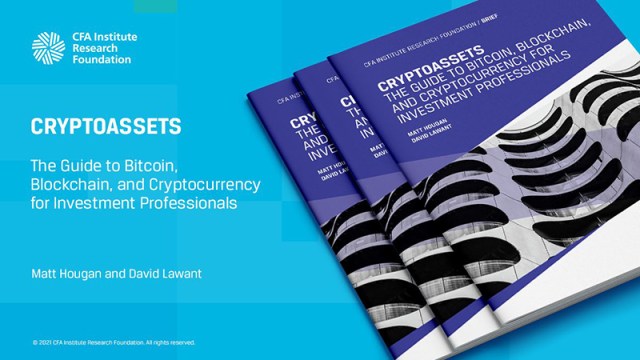[ad_1]
Crypto enthusiasts often claim that digital coins and tokens are uncorrelated with equities and can provide a safe haven amid stock market crashes. The assumption is that cryptoassets will act like “digital gold,” serving as a hedge against equity risk, and help investors ride out such downturns.
Such bold claims beg for examination, especially amid what looks like a bear market for stocks. So, we explored how crypto has performed during previous crashes. In particular, we isolated the major panic events over crypto’s short history and studied the correlation between this new asset class and some of its more traditional peers.
Five times over the last five years, the S&P 500 fell 7.5% or more. In each of these instances, we measured how correlations changed between gold and the S&P 500, bitcoin and the S&P 500, and bitcoin and gold. We examined the correlations between other cryptocurrencies and gold and the S&P 500 as well but found the results were qualitatively similar, so we used bitcoin as a proxy for crypto in general.
The correlation between gold and the S&P 500 came in as expected. Outside of major downturns, gold and the S&P 500 have just a slight positive correlation of 0.060. Yet, when the S&P 500 plunges, so does its average correlation with gold, which drops to –0.134. The takeaway is clear: Gold does offer some protection in down markets and lives up to its status as a perennial hedge.
Crash Correlations: Gold and the S&P 500
| Correlation | |
| First Crash: 26 Jan. to 7 Feb. 2018 | –0.073 |
| Second Crash: 21 Sep. to 28 Dec. 2018 | –0.077 |
| Third Crash: 6 May to 6 June 2019 | –0.407 |
| Fourth Crash: 20 Feb. to 28 March 2020 | 0.241 |
| Fifth Crash: 1 Jan. to 11 March 2022 | –0.356 |
| Average Correlation during Crashes | –0.134 |
| Average Correlation Outside of Crashes | –0.060 |
The same cannot be said for bitcoin — or crypto in general. Outside of equity market downturns, bitcoin and the S&P 500 have had a slight positive correlation of 0.129. Amid the last five stock market contractions, however, the correlation between bitcoin and the S&P 500 jumped to 0.258. Indeed, in only two of the past five downturns did the correlation turn negative. On the other hand, true to its hedge-y reputation, gold exhibited a negative correlation with the benchmark index in four out of the last five crashes.
Crash Correlations: Bitcoin and the S&P 500
| Correlation | |
| First Crash: 26 Jan. to 7 Feb. 2018 | 0.814 |
| Second Crash: 21 Sep. to 28 Dec. 2018 | –0.025 |
| Third Crash: 6 May to 6 June 2019 | –0.583 |
| Fourth Crash: 20 Feb. to 28 March 2020 | 0.588 |
| Fifth Crash: 1 Jan. to 11 March 2022 | 0.493 |
| Average Correlation during Crashes | 0.258 |
| Average Correlation Outside of Crashes | 0.129 |
But what about bitcoin and gold? How has that relationship changed during recent panics and downturns? In rising equity markets, bitcoin and gold have a slight positive correlation of 0.057. Amid stock market crashes, the correlation rises only slightly to 0.064.
So, whatever the state of the equity markets, the correlation between gold and bitcoin is pretty close to zero.
Crash Correlations: Bitcoin and Gold
| Correlation | |
| First Crash: 26 Jan. to 7 Feb. 2018 | –0.194 |
| Second Crash: 21 Sep. to 28 Dec. 2018 | 0.107 |
| Third Crash: 6 May to 6 June 2019 | 0.277 |
| Fourth Crash: 20 Feb. to 28 March 2020 | 0.275 |
| Fifth Crash: 1 Jan. to 11 March 2022 | –0.179 |
| Average Correlation during Crashes | 0.057 |
| Average Correlation Outside of Crashes | 0.064 |
Based on our data, crypto certainly does not act like digital gold. In times of panic, the correlation between crypto and the stock market actually increases. So, whatever its proponents may say about its utility as a hedge against market downturns, crypto has served as more of an anti-hedge, with its correlation with the S&P 500 rising as stocks plunge.
That said, given the lack of correlation between gold and crypto, the latter may add some diversification benefits to a portfolio.
Nevertheless, the overall verdict is undeniable: When it comes to hedging equity risk, bitcoin and cryptocurrencies are more fool’s gold than digital gold.
If you liked this post, don’t forget to subscribe to the Enterprising Investor.
All posts are the opinion of the author. As such, they should not be construed as investment advice, nor do the opinions expressed necessarily reflect the views of CFA Institute or the author’s employer.
Image credit: ©Getty Images/Moonstone Images
Professional Learning for CFA Institute Members
CFA Institute members are empowered to self-determine and self-report professional learning (PL) credits earned, including content on Enterprising Investor. Members can record credits easily using their online PL tracker.
[ad_2]
Image and article originally from blogs.cfainstitute.org. Read the original article here.


